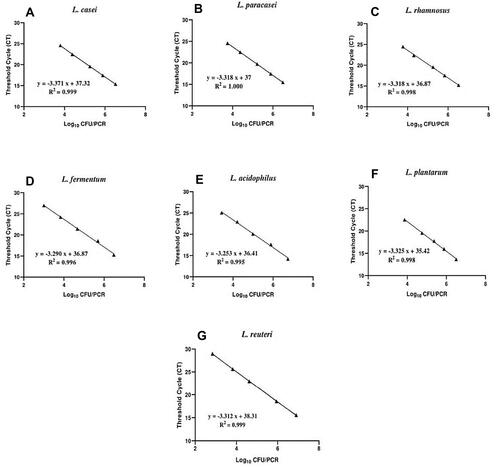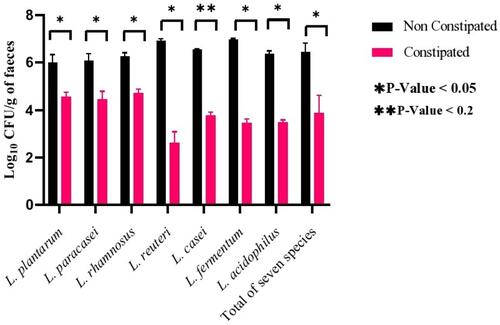Figures & data
Table 1 List of Primers Used in This Study
Table 2 Specificity of the L. Casei Primer Pair Used in This Study
Table 3 Demographic and Clinical Characteristics of the Subjects
Figure 1 Representative standard curves obtained by plotting the average Ct values against the estimated log10 CFU/PCR for L. casei (A), L paracasei (B), L rhamnosus (C), L fermentum (D), L acidophilus (E), L plantarum (F) and L. reuteri (G).

Table 4 Intra-Assay Repeatability, Inter-Assay Reproducibility and Detection Limits of qPCR
Figure 2 Quantity of seven Lactobacillus species in the feces of constipated children and healthy controls. Statistical significance of observed differences in the amount of Lactobacillus species between both constipated and healthy groups was measured by the Mann–Whitney U-test. Bars represent standard errors. P < 0.05 was marked with one asterisk (∗), and P < 0.2 with two asterisks (∗∗). One-way ANOVA testing shows the significant differences in quantity (log10 CFU/gram) between Lactobacillus species.

Table 5 Prevalence of Lactobacillus Species, Detected by Quantitative PCR
Table 6 The Quantity of Fecal Lactobacilli in Constipated Children and Healthy Controls
